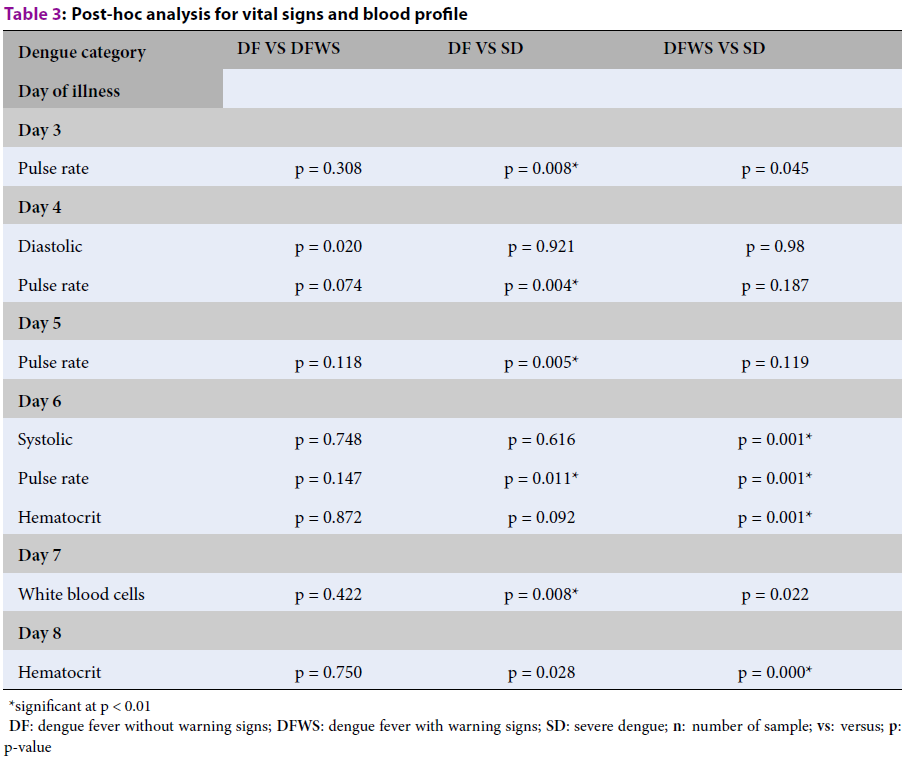Clinical data analysis of dengue fever severity identification
DOI:
https://doi.org/10.15419/bmrat.v8i7.683Keywords:
Blood profile, Dengue fever, Emergency Department, Vital signsAbstract
Introduction: The dynamic nature of dengue fever demands rapid and repeated clinical detection based on the vital signs variables, blood profile, and symptoms for providing timely clinical treatment. Patients with or without warning signs are at risk of contracting the severe dengue; thus, this study aims to identify the vital signs and blood profile variables that would differentiate the severity levels of dengue fever among dengue patients.
Methods: The patients were aged between 15 and 60 years and diagnosed with dengue infection. The infections were confirmed through laboratory tests positive either for the NS1 antigen or the dengue IgM antibody. The patients had no premorbid conditions.
Results: Our results show that dengue fever without warning signs and severe dengue can be differentiated using the pulse rate on day 3 (p = 0.008), day 4 (p = 0.004), day 5 (p = 0.005), and day 6 (p = 0.011) and the white blood cell count (p = 0.008) on day 7 of illness. Statistically significant parameters on day 6 of illness, such as systolic blood pressure (p = 0.001), pulse rate (p = 0.001), and hematocrit (p = 0.001), distinguished dengue fever with warning signs from the severe dengue category. Hematocrit (p = 0.000) was also found to be statistically significant in dengue fever with warning signs versus severe dengue on day 8 of illness. In conclusion, pulse rate was found to be a common marker for day 3 to day 6 even though other parameters were found to be significant. However, for day 7 and day 8, pulse rate was not found to be a contributor, instead, white blood cells and hematocrit were significant factors.
Conclusion: As the results of this study are based on a limited number of patients, it is recommended to further study the validity of the findings with a larger number of patients in the future.

Downloads
Published
Issue
Section
License
Copyright The Author(s) 2017. This article is published with open access by BioMedPress. This article is distributed under the terms of the Creative Commons Attribution License (CC-BY 4.0) which permits any use, distribution, and reproduction in any medium, provided the original author(s) and the source are credited.
